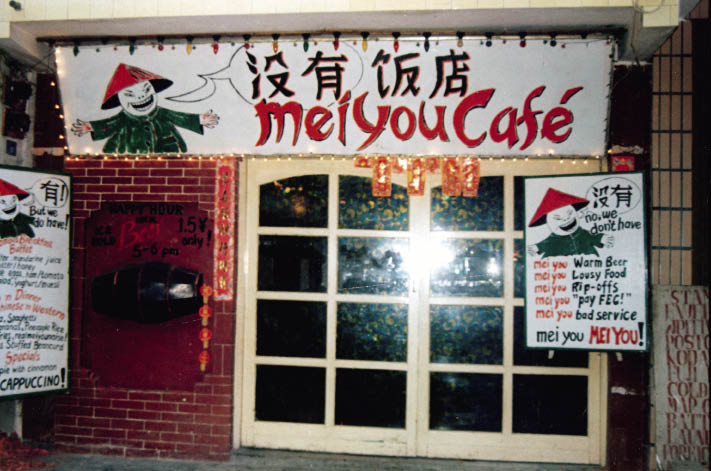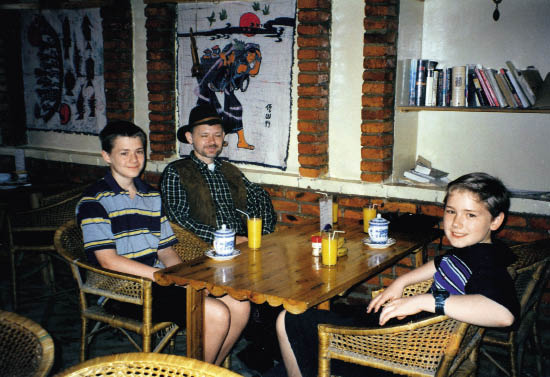I used to think ancient Chinese painters had to have been drunk to paint their surrealistic landscapes with rivers meandering past temples and pagodas perched atop columnar mountain peaks – until we drove to Guilin. We could barely believe our eyes as we drove through valleys blanketed in lush emerald rice paddies and ancient villages nestled against vertical green peaks topped with temples. But even the ancient Chinese doubted such landscapes really existed.
The Song Dynasty poet Fan Chengda (1126-1193), who spent two years in Guilin, wrote that he mailed his paintings of Guilin scenery to friends back home in Suzhou, but “few believed what they saw.”
We say “seeing is believing” but even firsthand, it’s hard to accept the reality of what looks like a miniature Chinese landscape somehow blown to larger-than-life proportions. No wonder Yangshuo (65 km from downtown Guilin) became our favorite holiday retreat, and we’re thankful the drive from Xiamen to Guilin now takes only 12 hours, compared with three days in 1993. Of course, the 1993 drive might have taken a day less if I’d not stopped every few minutes to take photos that look more like the product of Photoshop manipulation than reality.

Meiyou Café in Yangshuo.
I suspect that Fan Chengda knew that Guilin was as beautiful below ground as above. Guilin’s karst mountains are riddled with hundreds of beautiful caves, some with ancient farmsteads built right into the caves themselves. Reed Flute Cave, Guilin’s most famous, was popular over 1,200 years ago – before Fan Chengda’s day – and was rediscovered in the 1940s by refugees fleeing Japanese troops.
Our favorite part of Guilin is Yangshuo, a small town an hour’s drive south, or a four-hour boat cruise down the Lijiang River. Tourists gawk at strange rock formations such as Elephant Trunk Hill and at fishermen fishing with cormorants, much as their ancestors did 1,400 years ago. But I’m most intrigued by the area’s over 2,000 years of history. In 214 BC, Emperor Qin Shihuang (259-210 BC), who seemed to know every corner of his vast realm, ordered the construction of the Lingqu Canal to connect the Xiangjiang and Lijiang rivers. The oldest contour canal in the world, this 36.4 km marvel made possible the 2,000-mile waterway that connected the Yangtze River to the Pearl River Delta.
Unlike beautiful but sprawling Guilin, Yangshuo is a quaint little town settled between the Lijiang River and towering peaks – though some peaks rear their head right in the middle of Yangshuo itself. We delighted in exploring the shops and restaurants of 1,400-year-old West Street, hiking and cycling through the countryside and riding inner tubes or bamboo rafts on the Yulong River.

Bill Brown with his two sons.
You need a bird’s-eye view to really appreciate the beauty, so we climbed Yangshuo’s “TV Tower” peak, where we were rewarded with a priceless panoramic view straight out of a National Geographic TV special. With the old town, boat-dotted-river and countless peaks, the landscape seemed timeless – a Shangrila that an ancient legendary immortal had plucked out of Tibet and plopped down in South China.
The most famous scene is about 27 km upriver in Xingping Village. Don’t worry if locals show you a RMB 20 note. They aren’t begging. They’re showing you, proudly, that Xingping’s landscape is the one engraved on the back of the paper money.
Like anywhere in China, Guilin is famous for its local cuisine, the most famous being the Guilin Three Treasures: Guilin chili sauce, Guilin Three Flower Rice Wine and pickled tofu. While my wife’s favorite is Guilin zongzi, glutinous rice dumplings wrapped in bamboo or banana leaves, mine is Guilin noodles, which a local invented over 2,000 years ago to feed Qin troops who could not stomach the local food.
Yangshuo is also famous for its Western cafes, many with such humorous names as Mickey Mao Café, and Minnie Mao Café. Most Western food in China is far from authentic but, in Yangshuo, locals prepare it far better than the foreigners themselves! For breakfast, we feasted on banana pancakes with wild honey and blueberries, and coffee brewed from freshly ground Hainan coffee beans. For lunch and dinner, we alternated between Chinese and foreign favorites, including gourmet burgers and fries and wood-fired pizza, as good as any in Chicago.

Bill Brown and his family in Guilin.
Yangshuo is fun year round but most festive at Chinese New Year. Large cities like Xiamen banned fireworks in the 1990s but in Yangshuo, young and old alike (especially our two sons) still delight in setting off fireworks and firecrackers as bands of dragon dancers roam the streets, leaping and dancing to the sound of drums and cymbals.
Chinese New Year is a private time for families but in Yangshuo we found we have a very large family. Shopkeepers and farmers laughed and invited us into their homes. “Have some tea! Sit down!” And as if they had all the time in the world, they chatted about their families, their businesses and farms and how life had improved over the past decade. They also shared about local lore and practices, and the snake doctor who cured even cobra bites with herbs. “Better than hospitals!”
They were also keen on learning about American life, and glad to know that we also highly valued family and friendships. And speaking of friendship, I was surprised when a grandpa remembered the Flying Tigers of World War II – one of the best examples of Chinese and American friendship and heroism.
American volunteers serving with the Chinese Air Force in the Flying Tigers fought some of their last battles in Guilin. Although the Walt Disney Company had designed their cartoon tiger mascot, the Japanese learned they were deadly adversaries. In March, 2015, Guilin opened the Flying Tiger Heritage Park, which I hope becomes a powerful reminder of what Chinese and Americans can do when we cooperate in the face of adversity.
Guilin tourism has skyrocketed over the past two decades and its main streets are crowded. But step into the side streets or cycle into the countryside and you’ll find the same timeless beauty and tranquility we fell in love with over 20 years ago. Be sure to send photos home to friends – and then try to persuade them you didn’t use Photoshop!
DR. BILL BROWN is a professor at the Xiamen University MBA Center and Academic Director of its OneMBA program.
